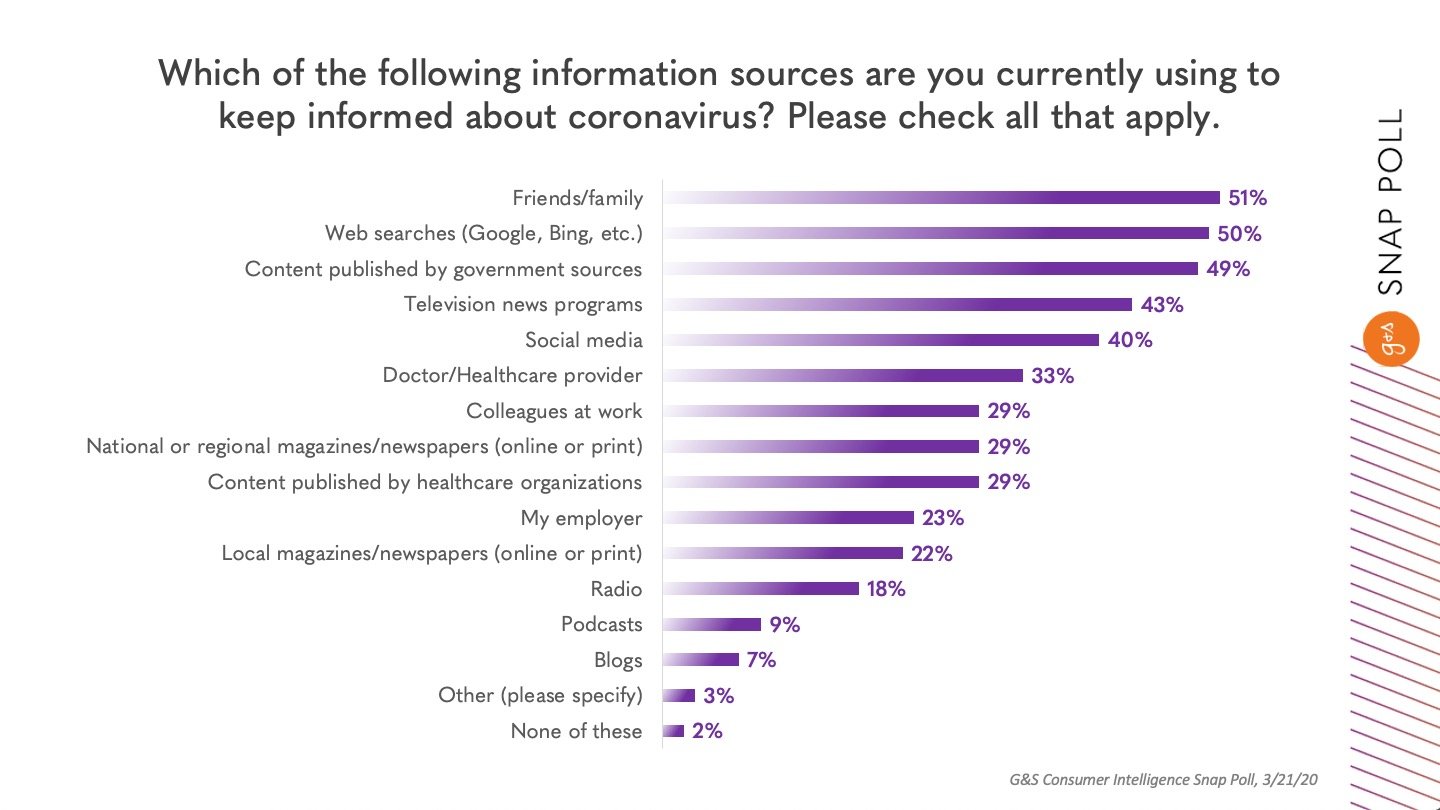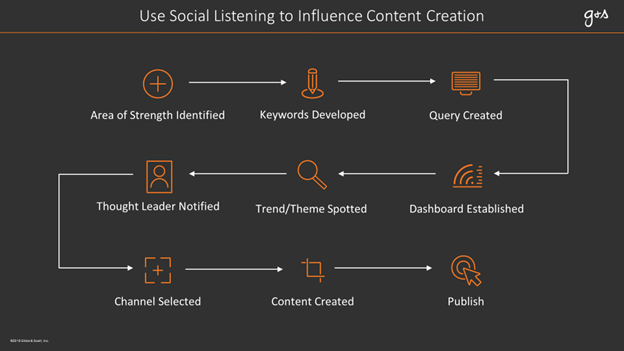When uncertainty is at an all-time high, routine promotion of your services could lead to a perception of tone-deafness. In our recent Consumer Intelligence Snap Poll, we found that, overwhelmingly, Americans are concerned about coronavirus. About three quarters (76%) of Americans say they are very or somewhat concerned about coronavirus impacting their health or their family’s health. Only 6% say they are not at all concerned.
If you’re looking to maintain an active social media presence while ensuring that your content is brand-enhancing, identify what your “in” is. And as you’re defining your “in”, be cognizant in the “how” you show it. We know visuals are essential in social media, but it’s important to remain sensitive in the images that you choose. Across America, many individuals are sheltering in their homes, isolating themselves and doing their part to flatten the curve. Brands using images that depict large group settings with multiple people run the risk of being perceived as inauthentic or insensitive to what has become a new normal -- social distancing.
Brand Values
Is your social media activity reflecting your brand’s intrinsic values? Well-established brands have clearly-defined brand characteristics. For a long time, if a brand attribute resonated with its audience, it was measured by feelings and perceptions, gathered through survey research. However, with social listening, your ability to track and measure the lift in awareness and sentiment of your core brand attributes is not only crucial – it’s now also accessible.
Get our expert insights on digital engagement delivered to your inbox when you subscribe to our newsletter.
Values aren’t hard to identify, and they must influence your activity across social media in a time of crisis. As evidenced by our recent Consumer Intelligence Snap Poll, over half of Americans say they would have a more positive perception of companies that share their coronavirus policies with the general public (71%). Demonstrating a commitment to ensuring your core brand values are front and center at a time in which every decision is critical matters to your audiences. Consumers and potential employees are paying attention to how companies are communicating and treating their employees during this time as it speaks volumes about their core ethics. Be clear in your commitment to ensuring that your values are reflected in your messaging.
Listen First, Speak Second

According to our recent Consumer Intelligence Snap Poll, Americans are getting their information from other people, web sources and government content. Social media is also among the top sources, especially for young Americans. Just over half of Americans say they are currently staying informed about coronavirus through friends or family (51%). Web searches (50%), content published by government sources (49%) and social media (40%) are also top information sources. Younger Americans are more likely to say they use social media to keep informed about coronavirus than other generations (52% of 18-29 year old, 34% of 30-44 year old, 35% 45-60 year olds, and 18% of 60+). If you don’t have a social media listening tool, invest in one. The layer of rigor needs to be at an all-time high. This isn’t as much about panicking as it is about being careful and understanding the tendencies and thoughts of your audience. At a time when information overload is high, be cognizant about how you enter and sustain your presence on social media.
At G&S, we follow a listening progression that influences our approach to content creation. The ability to combine this progression with artificial intelligence to identify topic clusters ultimately allows us to develop a taxonomy, helping us track the sentiment around certain brand values or themes around which we can develop content.

We continue to counsel our clients on their business communications strategies, relying on insights like these to inform our counsel, understand where employees are getting their information and monitor how they feel about COVID-19 communications so far.